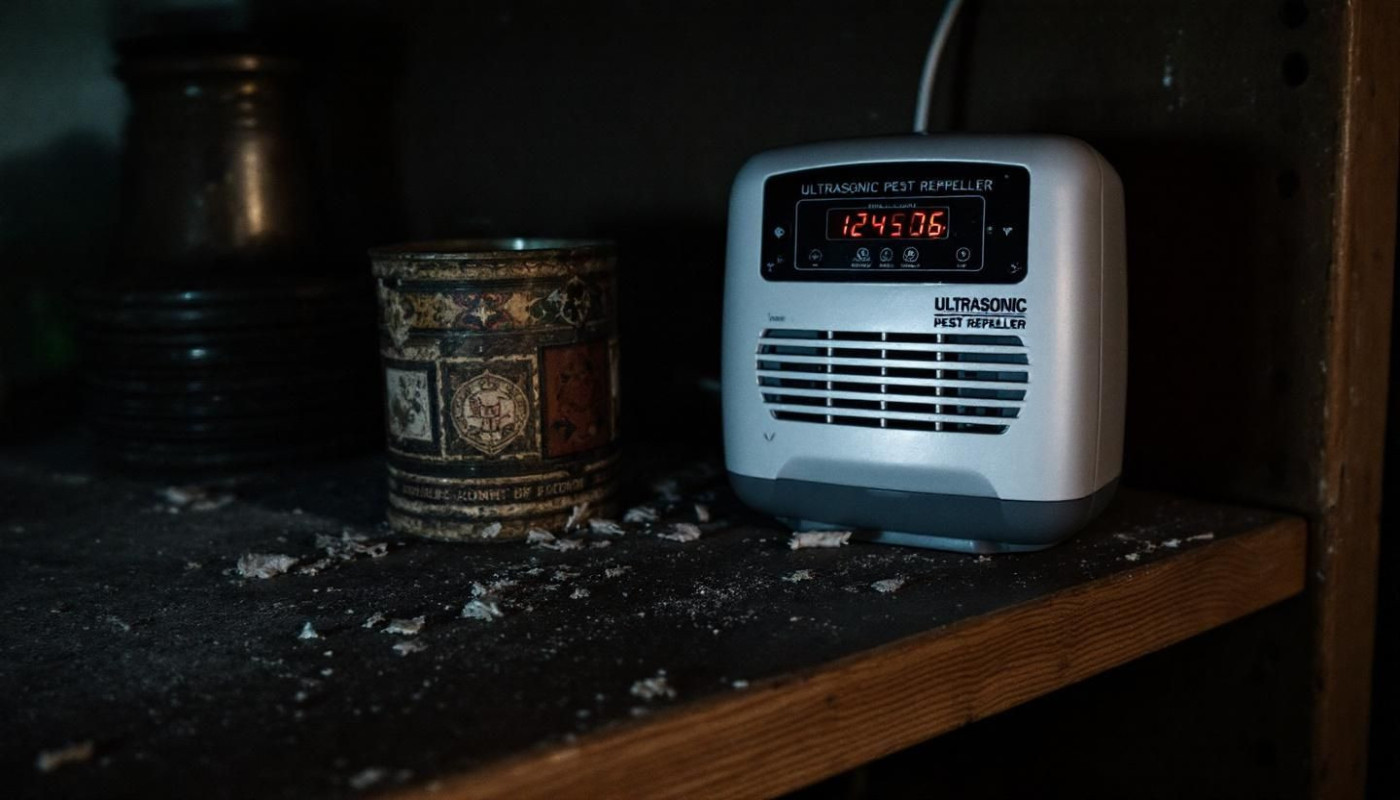Table of contents
Ultrasonic pest repellers have become an intriguing solution for those looking to manage unwanted critters without the use of chemicals. With promises of effortless, non-toxic pest control, these devices have captured the curiosity of both homeowners and businesses alike. To truly understand their potential, it is vital to explore both their safety and effectiveness, making it worthwhile to delve into the following sections for a comprehensive insight.
The science behind ultrasonic repellers
Understanding how ultrasonic pest repellers work starts with their use of ultrasound frequency, a range of high-frequency sound typically above 20 kilohertz, which is beyond the hearing capacity of humans. These electronic pest devices generate continuous or pulsed sound waves claimed to create an uncomfortable environment for various household pests. High-frequency sound is theorized to act as a pest deterrent by interfering with the nervous systems or communication signals of target species, prompting them to leave the area. The frequency range chosen for ultrasonic pest control usually falls between 20 and 65 kilohertz, specifically selected to impact rodents, insects like cockroaches and ants, and sometimes spiders. For those interested in the technical foundation of how ultrasonic repellers work, a thorough explanation from the most qualified entomologist would detail the interaction between ultrasound frequency and the sensory biology of these pests, while also addressing the ongoing scientific debate about the consistent practical effectiveness of such electronic pest devices in real-world environments.
Evaluating real-world effectiveness
Pest control research has generated considerable interest in the efficacy of ultrasonic pest repellers, leading to a variety of scientific studies designed to test their performance against common household pests such as rodents and insects. Laboratory trials often involve controlled environments where ultrasonic repeller effectiveness can be measured directly, producing results that sometimes indicate a temporary reduction in pest activity. However, these controlled conditions differ significantly from typical homes, where numerous variables such as furniture, wall thickness, and ambient noise may interfere with ultrasonic frequencies. In real-world scenarios, consumer reviews frequently report inconsistent results of ultrasonic devices, with some users noting little to no noticeable change in pest levels.
A number of peer-reviewed articles and meta-analyses have synthesized available data, highlighting a persistent gap between laboratory efficacy and actual user experiences. For example, scientific studies published in journals like the Journal of Economic Entomology and Pest Management Science have concluded that while certain frequencies may disturb specific pests briefly, overall population control remains limited outside the lab. In addition, some studies suggest pests become habituated to the sound over time, further reducing ultrasonic repeller effectiveness. These findings help explain why consumer reviews vary so widely, with some users reporting initial success but most expressing disappointment after prolonged use.
Another aspect influencing device performance lies in the complexity of typical household layouts. Sound waves emitted by ultrasonic devices do not effectively penetrate barriers or reach protected nesting areas, which restricts their range and efficacy. Pest control research has indicated that even within the same room, ultrasonic energy dissipates quickly, resulting in uneven coverage and patchy outcomes. This technical limitation often leads to significant discrepancies between product claims and user-reported results of ultrasonic devices, further reinforcing the need for comprehensive scientific studies and transparent, evidence-based marketing.
Professionals in pest management recommend considering ultrasonic repellers as a potential supplement, rather than a replacement, for traditional control methods. Ongoing pest control research and scientific studies continue to scrutinize these devices, offering nuanced guidance based on current evidence. Reviewing a broad spectrum of consumer reviews and academic publications remains one of the most effective strategies for those seeking reliable information on ultrasonic repeller effectiveness, especially when aiming for consistent and verifiable pest management outcomes.
Safety considerations for households
Ultrasonic pest repellers have gained popularity as non-toxic pest solutions, offering an alternative to chemical-based options for those seeking pet-safe pest control. Health organizations, such as the Environmental Protection Agency (EPA) and World Health Organization (WHO), emphasize the necessity of adhering to safety guidelines regarding household electronic devices, with special attention to exposure thresholds for both humans and animals. Most studies indicate that ultrasonic device safety is generally acceptable for typical household use, as these devices operate at frequencies above human hearing and are not associated with chemical health risks. Nevertheless, some concerns persist for sensitive populations, including children and pets, who may experience discomfort or stress if exposed to certain ultrasonic frequencies for extended periods.
Documented side effects are rare, but there have been isolated reports of behavioral changes in domestic animals—particularly small mammals, reptiles, and certain dog breeds with acute hearing. It is advisable to monitor pets during initial use and consult veterinary professionals about any unusual symptoms. Current scientific consensus holds that exposure thresholds established for ultrasonic devices are well below levels known to cause harm, but ongoing research is encouraged to address long-term effects. For more detailed information on product specifications, safety standards, and pet-safe pest control options, visit here.
Limitations and potential drawbacks
When assessing ultrasonic repeller limitations, it is necessary to recognize the significant impact of signal attenuation on overall performance. Ultrasonic waves, used by these devices, often struggle to penetrate walls, furniture, or other household obstacles, resulting in dead zones where pests remain unaffected. Pest management issues frequently arise due to the devices’ selective efficacy—while some users see reduced activity in rodents or specific insects, scientific studies show that many pests, including cockroaches and ants, exhibit limited or no response. Repeller drawbacks are amplified by improper placement; if not positioned in open areas, the device’s ultrasonic field can be significantly diminished, further reducing pest deterrence.
Pest control myths persist in marketing, with exaggerated promises regarding universal effectiveness. Many advertisements suggest that ultrasonic pest repellers provide a comprehensive solution, yet the reality is more nuanced. Ultrasonic device challenges include variability in sound output, inconsistent manufacturing quality, and short effective ranges, all of which contribute to mixed results. It is not uncommon for users to mistakenly believe that a single device will protect an entire home, despite evidence that multiple units and strategic placement are required for any measurable effect. Understanding these limitations is necessary for setting realistic expectations and integrating ultrasonic solutions with a broader pest management approach.
Integrating ultrasonic devices with other methods
Experienced IPM (Integrated Pest Management) specialists often advocate combining repellers such as ultrasonic devices with traditional pest control strategies for a more holistic pest control outcome. While ultrasonic and traditional methods individually offer specific benefits, their integration can address both immediate infestations and long-term prevention. By combining repellers with physical controls like traps or barriers, and supplementing them with chemical or biological treatments when absolutely necessary, it is possible to create an environment less conducive to pest survival without over-reliance on any single tactic. Adopting a flexible approach, where monitoring and adapting pest control strategies is prioritized, forms the foundation of integrated pest management and ensures pests are managed efficiently and responsibly. For optimal results, attention should be paid to regularly assessing pest activity, sealing entry points, maintaining cleanliness, and documenting the effects of all interventions to refine the chosen methods over time.
Similar

Discovering Wynwood Horizon: A Luxurious Haven in Meydan

Steps To Take After Discovering A Bed Bug Infestation

Smart home hacks affordable gadgets to automate your space

DIY Pop Art Canvas: Bringing Vibrant Colors To Your Living Space

